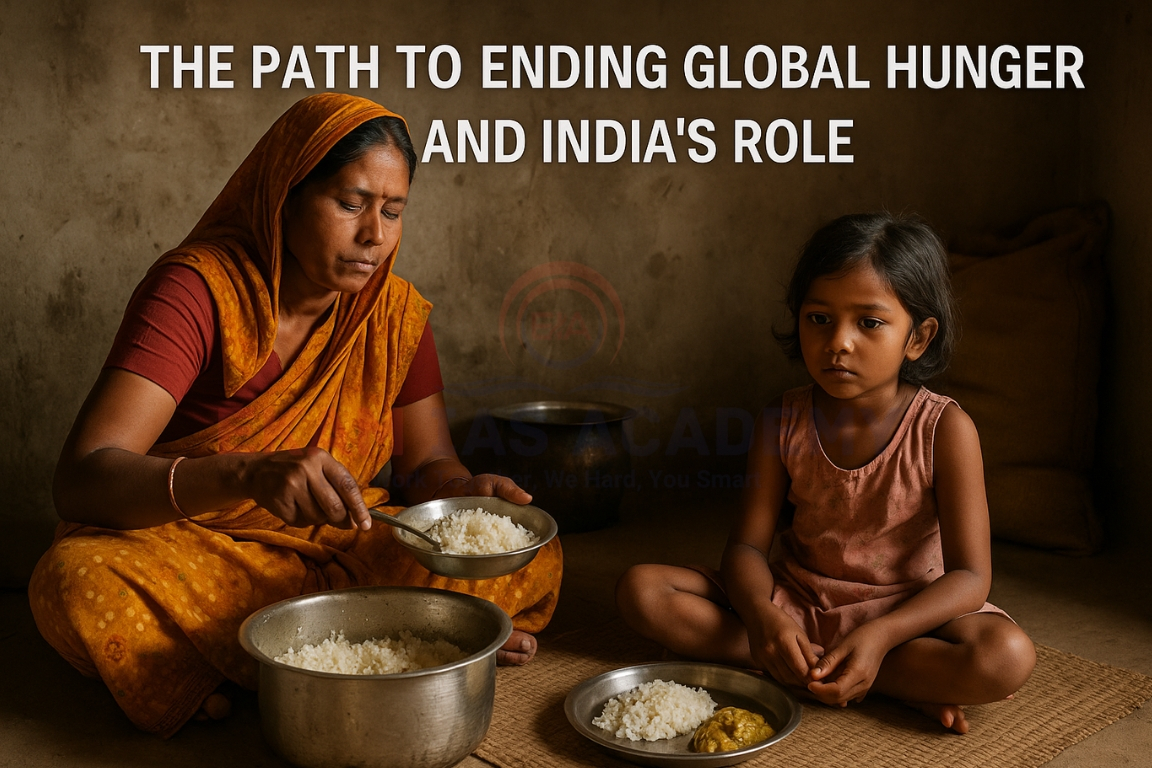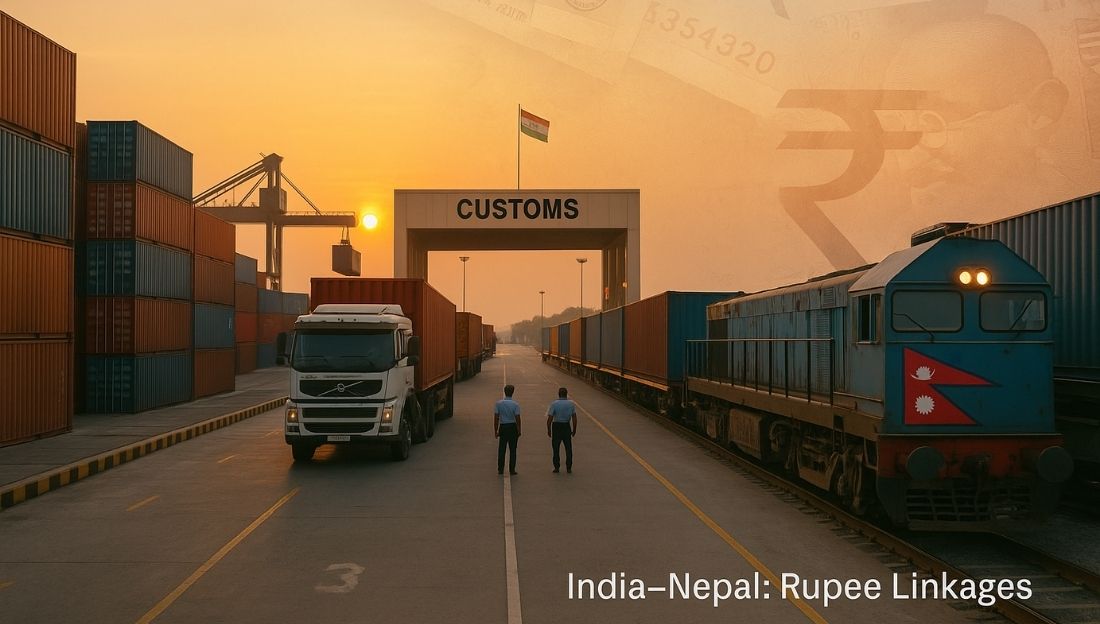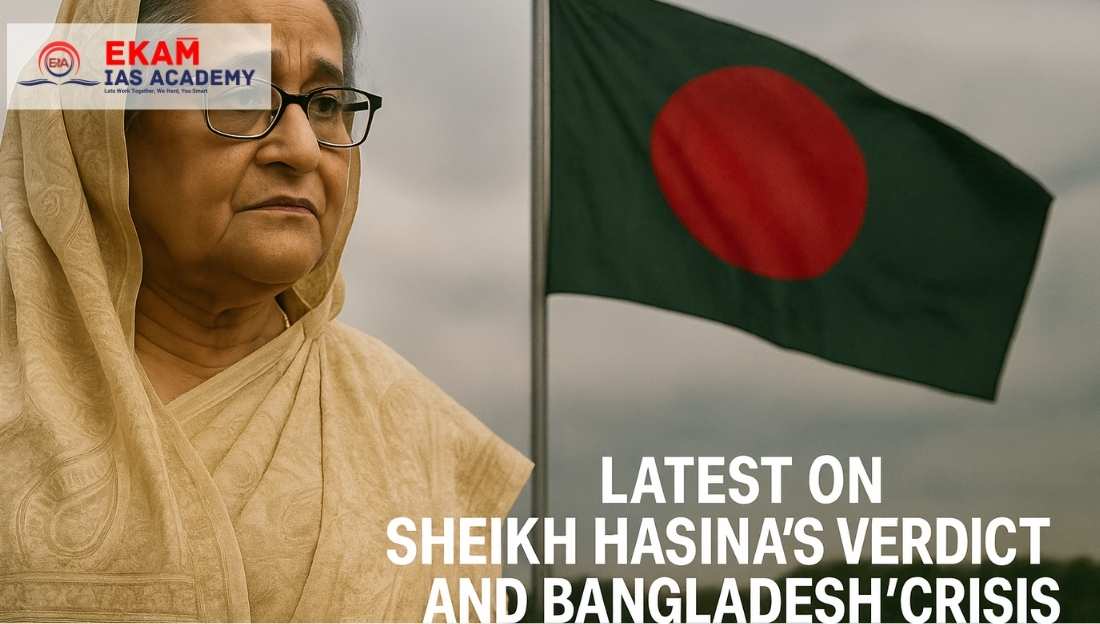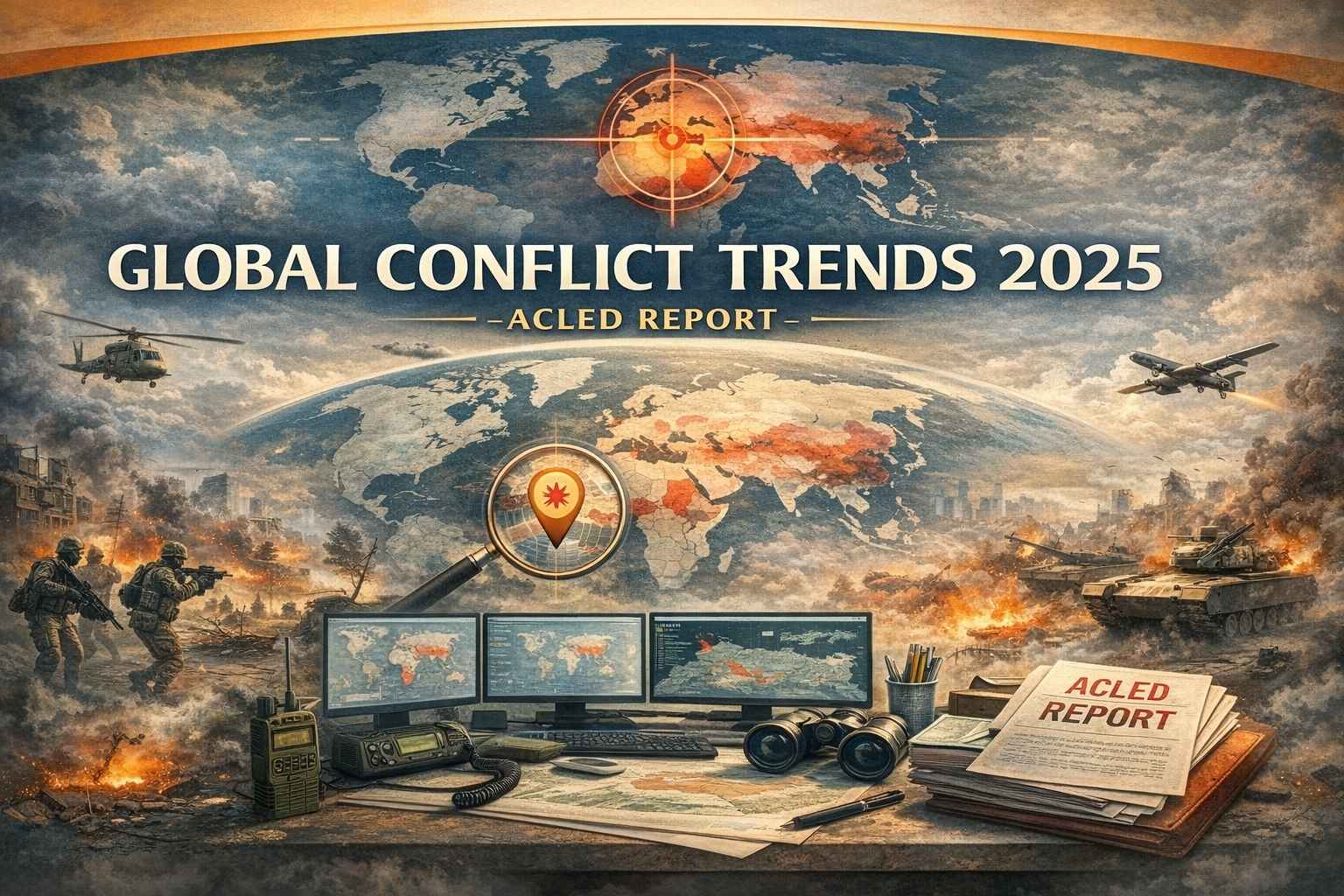The UN’s State of Food Security and Nutrition in the World 2025 report shows a decline in global undernourishment. India’s progress in reducing hunger has been highlighted as a key driver of this positive global trend.
Background
- In 2024, 673 million people (8.2% of the world population) were undernourished, a fall from 688 million in 2023.
- India’s undernourishment rate declined from 14.3% (2020–22) to 12% (2022–24), meaning 30 million fewer people living with hunger.
- This improvement is remarkable considering the pandemic’s disruptions.
Transformation of Public Distribution System (PDS)
- PDS reforms have been central to India’s hunger reduction.
- Key features:
- Digitalisation with Aadhaar-enabled verification.
- Real-time inventory tracking and biometric authentication.
- One Nation, One Ration Card making entitlements portable for migrant workers.
- During COVID-19, these measures allowed over 800 million people to access subsidised food.
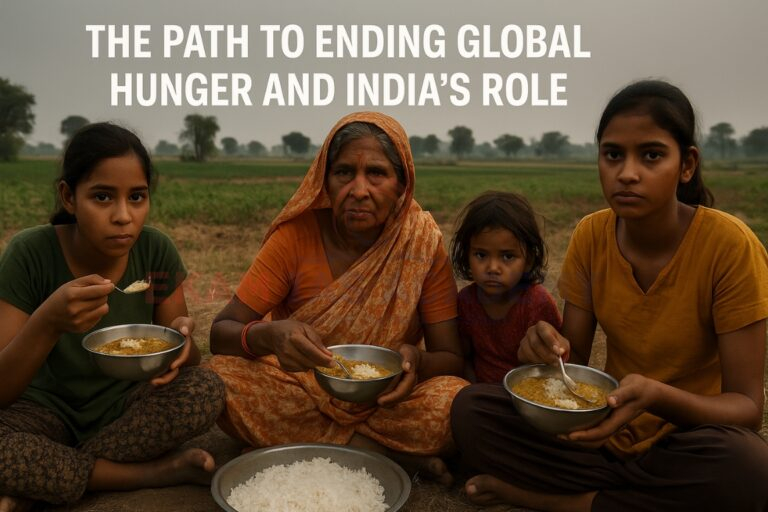
From Calories to Nutrition
- While calorie availability has improved, nutritional challenges remain:
- 60% of Indians cannot afford a healthy diet due to high prices of protein-rich and nutrient-dense foods.
- Weak supply chains and lack of cold storage worsen the problem.
Government initiatives:
- PM POSHAN (2021) – school meals focusing on dietary diversity.
- Integrated Child Development Services (ICDS) – nutrition-sensitive approach for children and mothers.
- New UN data shows some progress in making healthy diets more affordable, despite food inflation.
Structural Challenges in Nutrition
- Even as hunger declines, malnutrition, obesity, and micronutrient deficiencies are rising, especially in poor rural and urban areas.
- This indicates a need for agrifood system transformation beyond basic food distribution.
Transforming India’s Agrifood System
- Priorities for the future:
- Increase production and affordability of pulses, fruits, vegetables, and animal-based foods.
- Build cold storage and logistics systems to reduce the 13% food lost post-harvest.
- Strengthen Farmer Producer Organizations (FPOs) and women-led food enterprises, particularly in climate-resilient crops.
- Use digital tools — AgriStack, e-NAM, geospatial platforms — for better planning and nutrition delivery.
Global Significance of India’s Role
- India’s progress is a model for the Global South, showcasing how digital governance and strong safety nets can reduce hunger.
- With just five years to achieve SDG-2 (Zero Hunger), India’s continued leadership is vital.
- Shift needed: from ensuring food security to ensuring nutrition, resilience, and opportunity.
Conclusion
India has shown that hunger reduction at scale is possible with political will, smart investments, and inclusive governance. The fight against global hunger will depend heavily on India’s ability to move from feeding its people to nourishing them.


